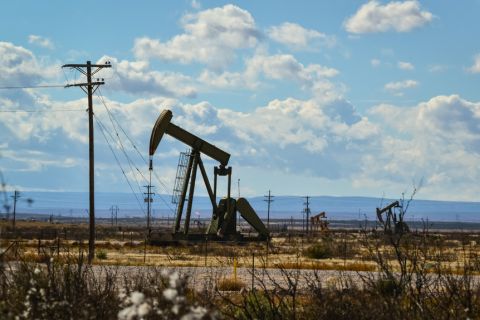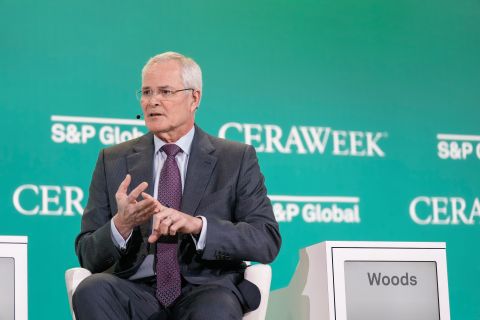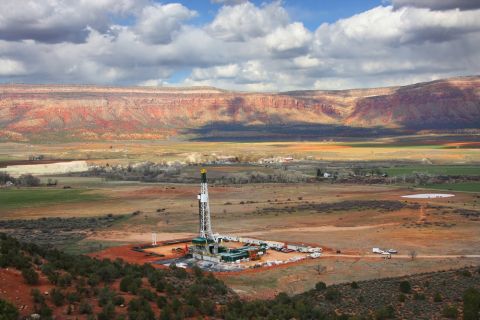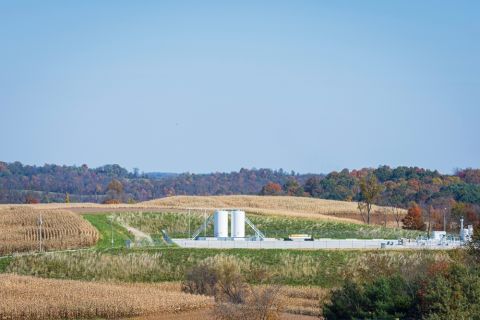A funny thing is happening in news coverage these days – reporters are interviewing other reporters. I honestly didn’t think they’d stoop so low. But enough Hart editors (who are, for the most part, also reporters) have been asked to do interviews that our company invested in media training.
There is a reason I’m in print journalism. I often joke that I have a face for print journalism. Being photographed makes me nervous, and being videotaped terrifies me. I must say that my fears were in no way allayed by the media training experience.
Chris Wailes and Emily Bernard from Pierpont Communications Inc. arrived at our offices carrying bundles of scary-looking electronics and gave us a two-hour presentation on how to survive an interview. I daresay I don’t want to give away too many of their secrets because I don’t want my sources using this on me, but for someone who has to be interviewed on national TV by a not-necessarily-friendly reporter, the tips are extremely useful.The main idea is to be prepared with a message and stick to that message, regardless of how off-the-wall the questions might be. This is easier said than done (about which more later), but the consequences of being led away from your key message can be devastating.
You also need to assume that you’re “on air” from the moment you enter the building until the moment you leave. Always assume that any camera that you see is on. Wailes recounted an amusing experience – he was going in for yearly training and got wrapped up in a chat with his teacher. The teacher kept trying to get him to say that at least some of his attorney clients were, well, insert your favorite bad word here. He was finally pressed to say, “They’re NOT [bad word]s.” Later the tape was edited. He was horrified to hear the first question and his answer: “So, I understand that some of your clients are attorneys.” His one-word answer was the bad word. Luckily it was only a training exercise.
Much of the training had to do with simple preparation (drink only lukewarm water one hour before the interview because other drinks can mess up your vocal cords) and body language. Typically a TV interview captures the interviewee from the chest up, but hands should still be visible. Also easier said than done.
So after two hours of going over the basics, which wasn’t nearly long enough (some people go through several weeks of this training), we were given a fake interview request. My request was to talk to a reporter from CNBC during one of our unconventional gas conferences about gas shale development in the US.
We had 10 minutes to develop our message while trying to remember all of the advice we’d just received: staying on point while inserting analogies, quotable quotes, absolutes, etc.; keeping our hands visible; pacing ourselves while also inserting pauses for effect; moving our heads; leaning forward (leaning backward makes you look 30 pounds heavier, not a good plan!); and somehow smiling and being passionate about our topic at the same time. Then it was off to the “studio.”
The camera and microphone were already on when we entered the room, so had I said anything inappropriate, it would have been available for editing into the interview. Luckily I didn’t say anything too outrageous. Planning to discuss US shale plays, I was a little taken aback when the conversation immediately steered toward the Macondo disaster and the potential implications for regulatory reform. Somehow I steered the conversation back to what we were supposed to be talking about. But I was already barely treading water.
About two minutes into the interview, I realized that my hands were not visible. So I brought them up. What does one do with one’s hands in that position? My response was to gesticulate wildly, as if I was being interviewed in a swarm of gnats. I also seemed to have a perpetual scowl on my face, although I was simply concentrating on the questions. Do I always look that grumpy? I hope not.
My biggest faux pas was to defend hydraulic fracturing by saying it was technically impossible to pollute the water tables from a formation 10,000 ft deep. Not that this is necessarily inaccurate, but by saying the word “pollution,” I made the heinous mistake of introducing a negative word into the interview. It actually was part of my key message, but a crafty editor could have had a field day with it.
We watched and critiqued each other’s videos. I would say my only positive feeling about the interview was that I did stay on target and sounded halfway educated in my responses. I thought the rest of my colleagues did a much better job.
So when CNBC comes calling, I’ll know whom to steer them to.
Recommended Reading
Athabasca Oil, Cenovus Energy Close Deal Creating Duvernay Pureplay
2024-02-08 - Athabasca Oil and Cenovus Energy plan to ramp up production from about 2,000 boe/d to 6,000 boe/d by 2025.
Novo II Reloads, Aims for Delaware Deals After $1.5B Exit Last Year
2024-04-24 - After Novo I sold its Delaware Basin position for $1.5 billion last year, Novo Oil & Gas II is reloading with EnCap backing and aiming for more Delaware deals.
CEO Darren Woods: What’s Driving Permian M&A for Exxon, Other E&Ps
2024-03-18 - Since acquiring XTO for $36 billion in 2010, Exxon Mobil has gotten better at drilling unconventional shale plays. But it needed Pioneer’s high-quality acreage to keep running in the Permian Basin, CEO Darren Woods said at CERAWeek by S&P Global.
Uinta Basin's XCL Seeks FTC OK to Buy Altamont Energy
2024-03-07 - XCL Resources is seeking approval from the Federal Trade Commission to acquire fellow Utah producer Altamont Energy LLC.
Analysts: Why Are Investors Snapping Up Gulfport Energy Stock?
2024-02-29 - Shares for Oklahoma City-based Gulfport Energy massively outperformed market peers over the past year—and analysts think the natural gas-weighted name has even more upside.





